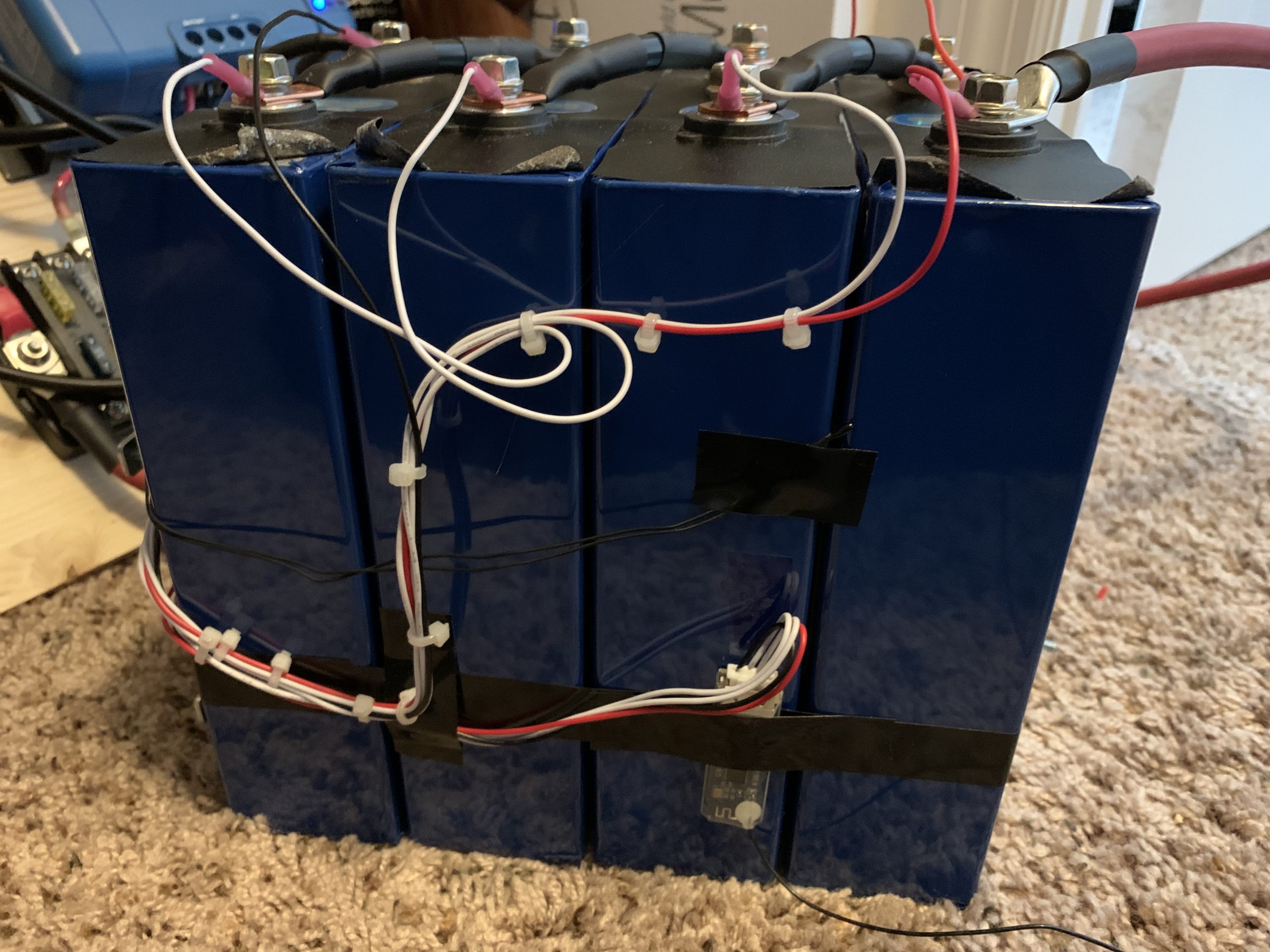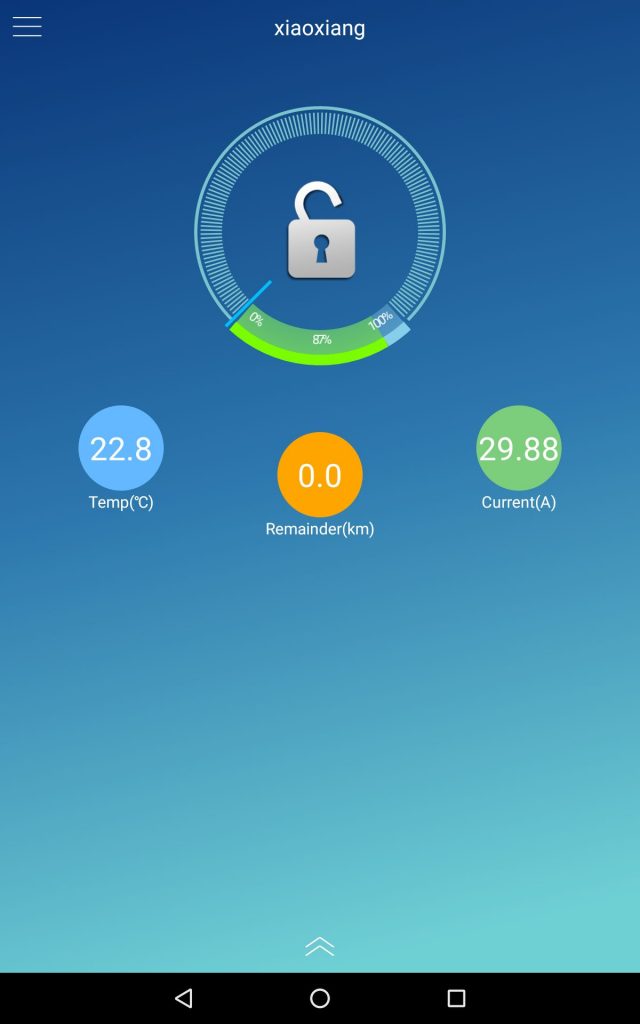This project was/is a tiny bit of a mess. But I’m still going to declare it a success but it was fraught with issues. Issue number one is political. For some reason the US is not a major supplier, and barely a supplier at all, of high tech Lithium batteries. They all just about come from China.
I read on a website recently where someone stated that the Chinese had perfected the art form of lying. That’s a stone cold fact. Dealing with Chinese companies, manufacturers and shippers and you can expect to wallow in the bullshit at least once. Enough of that.
So if you want LiFePO4 cells you have to go to China. I got mine from Alibaba. They are 3.2v, 200 amp hour batteries. I bought 4 cells which would equal 12 volts when wired in series. Total cost with busbars (to connect the cells together) was about $505. In comparison to buy an off the shelf 12v, 200 amp hour LiFePO4 battery from a supplier would cost nearly $2000.
You also need a Battery Management System. This cost about $90.
I waited for about a couple of months before I got my batteries. This of course is in the midst of the Coronavirus pandemic. So I wasn’t really disappointed in the shipping time. What I did mind was that when I received the batteries they were literally packed in a cardboard box with no cushioning and the box was bigger than the batteries inside. They came somewhat dented up but still safe to use. So right away I’ve spent $500 and I get dented up stuff. If you know me I can’t stand scratches and dents on my new stuff.

Jackleg Chinese shipped batteries
Secondly there is NO WAY these are new batteries. No way at all. You can tell they had been assembled in packs and the screw in terminals has one battery that you can barely get the threads to engage and hold on. I’m going to have to do a helical coil repair on it soon. It won’t tolerate one or two more cycles. Also the black vinyl coating is peeling up on all corners. NOT BRAND NEW. So these people are full of shit. And they forgot to ship the busbars but they did refund the $6 that they cost.
New batteries should charge to 3.65 volts. So far the highest charge I have seen is 3.4 volts per cell for a total of 13.6 volts. Is all lost? No. 13.6 volts is considered 100% charge on most LiFePO4 SOC charts I have ever seen. The batteries bulk charge usually to 14.4. volts and then after you stop applying the juice they instantly settle down to 13.6 or even 13.5v.
So while they are NOT brand new batteries and they don’t seem to “fully” charge to 14.4 volts which is just a surface charge anyway they perform EXACTLY THE SAME AS MY TWO BATTLEBORN BATTERIES WHICH COST $2000. On any given morning I wake up and my Battleborn batteries have 82% charge remaining.
On my Chinese cells the last 2 morning I woke up with 91% of charge. And before you say they are performing better I wasn’t running my Alpicool Mini Fridge off of the Chinese batteries. Once you factor that draw in you realize the performance is about the same.
So am I pissed that I didn’t get brand new cells that charge “fully”? Yes. I’m pissed. However I STILL GOT A BARGAIN. The batteries cost a fraction of the Battleborn’s and they perform the same. Also I’m putting this rig in the camper and the way I use solar in the camper I WILL NEVER get close to battery depletion anyway.
So beware the Fucking Chinese.
Now to the build. I put 3M double sided tape between the batteries which holds amazingly well. Also since I didn’t get busbars I made my own from 4 gauge cable and copper connectors. They turned out nicely.

Home made busbars
Hooking the battery management system (BMS) up was easy.

BatteryHookup.com BMS
The black wire goes to the main negative. Also the blue wires on the BMS go to the main negative. The three white wires go in order to the 1st, 2nd, and 3rd battery positive. The red wire goes to the main positive. Then the battery can be connected to the 2 black wires on the BMS to the negative and the battery positive can be hooked to the main battery positive terminal.

BMS with Bluetooth and Temp Probe
A little wire management goes a long way. Get some zip ties and MAKE IT NEAT.
Plug in the bluetooth, tape the temperature probe somewhere to the battery and then plug the BMS connector into the BMS board.
To connect to the BMS you need Android and a program you can get from Will Prowse’s video. Check the links below his video here. Also his video shows the build in great detail. Better than this web page. Watch it and learn.
Here’s a peek at the BMS software:
BMS Software (click pics to enlarge)
What a great project although it would have been far greater to have brand new Class A battery cells.

My mini system with DIY battery
I also got around to putting the battery into a Group 31 battery box. I placed terminals on the top and added this battery disconnect switch on the side. Now it is portable and has a way to isolate the battery from the system for when you are working on something.


Still I feel like I got my monies worth. You can buy cells from US dealers but they get them from China and mark up the prices big time. If you have the patience you should order from China but if I ever do it again I know this about China. EVERYTHING IS NEGOTIABLE. If you tell them upfront you will only tolerate brand new cells, that’s what you’ll get otherwise they’ll treat you like shit and pawn their crap off on you for top dollar. That my friends is the Chinese way. I once had a Chinese gf who owned a bar. If you ordered anything out of a bottle you can better believe it was watered down or the top shelf bottles were refilled with bottom shelf stuff. It’s just their way.



“So beware the Fucking Chinese.”
Oh so true.
Hello mi name is Johnny I wonder if I cut buy a lifepo4 battery 12v 120ah from you
you made 2 mistakes, Alibaba is the website for companies, not for consumers, 2 you should have disputed the damages right away, at least they would have refunded a part of the money. Aliexpress is for consumers
Curious as to where you installed you BMS. Can you share more pics of the battery box?
Not all Chinese products are bad,you can check our battery set,
what you need to do is to prepare a screwdriver and leave others to us.
Nope, not all Chinese products are bad, but I do have some experience with Chinese. I was with a Chinese gal for about 6 years and she owned a bar. She evaded taxes, watered down the booze, overcharged drunks routinely, anything to make a buck. I also travelled around the Western Pacific rim for about 16 years and Chinese people by and large on vacation are rude fucks.
What is the screwdriver comment all about? That makes no sense.
Also I removed the link to your battery website. Don’t use my blog to try to advertise your product.
Thank you John for telling us straight up what is what. When you pay top dollar you should get Grade A and you cannot trust Chinese.
Hey John. Thanks for the write up.
As a reflection of culture, your comments regarding your experience with China, sadly, ring true.
I have food allergies and learned early on that the one kind of restaurant I could most reliably trust to lie to me about whether their food was safe for me, were Chinese restaurants. Sad. I miss Chinese food. It has been over 15 years now!
One thing I thought was missing from your entry is the name of the company you ordered from in China. A small handful of suppliers have a good reputation. The rest I would steer clear of. But for those out there who don’t know this, you could spare them making the mistake of going with the supplier we already know did wrong by you?
For those curious about the good Chinese suppliers, check out the DIY solar power forums. You’ll find up to date info about reputable suppliers.
Hi John, great write-up! I’m curious about how you wired the negative rails to the bms, it looks like you soldered directly, yes? Did it not come with the threaded plates on there or did you remove them? I imagine it took some decent wattage to sink enough heat into the joint!
Have the cells held up over the years?
Ash…..It’s been so long that I’m not sure. If I do remember correctly the BMS had wires already and I terminated the ends. I still have that and another battery in the garage and I take them out and top them off regularly with a solar panel. They are just for emergency use around the house but I did use one recently for powering a ham radio. I’ll take a peek in the AM and see how the BMS is terminated. Thanks for the comment…….John